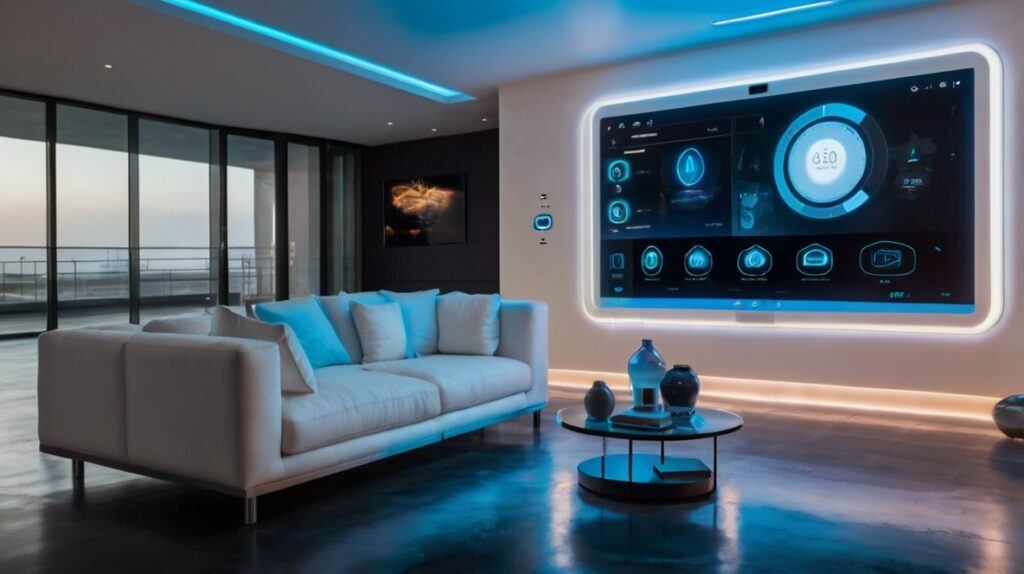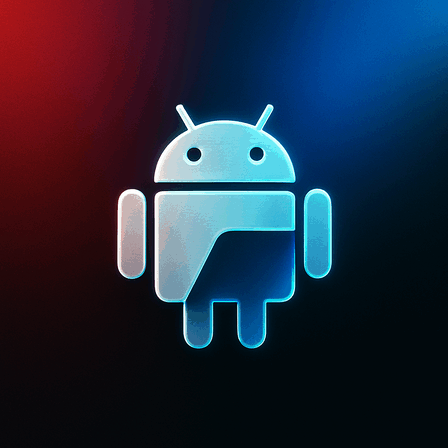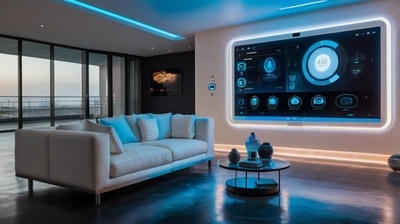
Unlocking the Full Potential of Your Smart Home: The Best Android Apps for Seamless Integration
In 2025, the vision of a truly interconnected smart home is no longer a futuristic dream but a tangible reality, largely driven by the power and versatility of Android applications. As our homes become increasingly intelligent, the right apps are crucial for managing everything from climate control to security with effortless precision. This comprehensive guide will explore the top Android apps for smart home integration, delving into their features, benefits, and how they contribute to a truly automated living experience. Whether you’re a seasoned smart home enthusiast or just beginning your journey, understanding these powerful tools is key to optimizing your digital dwelling.
The Evolution of Smart Home Control: Beyond Basic Automation
The landscape of smart home technology has evolved dramatically. Gone are the days of managing individual devices through separate, siloed apps. The focus today is on holistic ecosystems, seamless integration, and intelligent automation driven by advanced AI and the Matter protocol. Android, with its open nature and vast ecosystem, stands at the forefront of this revolution, offering a plethora of applications designed to bring all your smart devices under one unified command center.
The goal isn’t just to turn lights on and off remotely; it’s to create a living environment that anticipates your needs, conserves energy, and enhances your security without constant manual intervention. This is where the power of well-designed Android apps comes into play, transforming a collection of smart gadgets into a cohesive, intelligent home.
Key Features to Look for in a Smart Home Android App
When selecting an Android app for smart home integration, several critical factors should guide your choice. An ideal app will not only simplify control but also offer advanced functionalities that genuinely enhance your daily life.
- Easy-to-Use Interface: A cluttered or complex interface can quickly negate the convenience of smart home technology. Look for apps with intuitive navigation, clear device categorization, and customizable dashboards. Apps like Switchbot and Emporia are praised for their minimalistic and user-friendly designs, offering an excellent overview on the home screen that acts like a true home hub (cnet.com).
- Broad Device Compatibility: The ability to integrate with a wide range of brands and device types is paramount. The modern smart home often comprises products from various manufacturers. Apps that support the Matter protocol, like Google Home and Samsung SmartThings, are leading the way in breaking down brand barriers (androidheadlines.com).
- Multiple Automation Functions: Beyond simple on/off controls, look for robust automation capabilities. This includes scheduling, geofencing, scene creation, and AI-powered routines that can learn your habits and adjust settings accordingly. The Homey app, for instance, is highly regarded for connecting various systems like KNX, Philips Hue, and Ikea, enabling complex flows and automations (homey.app).
- Voice Assistant Integration: Seamless integration with popular voice assistants like Google Assistant and Amazon Alexa allows for hands-free control, making your smart home even more responsive. Most leading smart home apps offer this functionality, enabling you to control devices with simple voice commands (rankmath.com).
- Remote Monitoring and Control: The ability to manage your smart home devices from anywhere in the world provides peace of mind and convenience, whether you’re adjusting the thermostat on your way home or checking security cameras while on vacation.
- Data and Analytics: For devices like smart plugs or energy monitors, apps that provide detailed data on energy consumption or device performance can be incredibly valuable for optimizing efficiency. Emporia’s app, for example, offers extensive data on electricity usage in a user-friendly format (cnet.com).
Top Android Apps Shaping the Smart Home Experience in 2025
Several Android applications are making significant strides in offering a superior smart home integration experience. These apps stand out due to their comprehensive features, user-friendly design, and forward-thinking integration capabilities.
-
Google Home: The quintessential app for Android users, Google Home has become significantly more powerful with its 2023 redesign and integration with Matter. It’s ideal for controlling devices within the Google ecosystem (Nest cameras, doorbells, smoke alarms) and increasingly for non-Google gadgets as well (highspeedinternet.com). In 2025, Google Home is enhancing its capabilities with AI-powered routines and predictive control, enabling a home that anticipates your needs (androidheadlines.com). Its seamless compatibility and easy setup make it an excellent choice for beginners and those embedded in the Google ecosystem (zdnet.com).
-
Samsung SmartThings: Samsung’s SmartThings app has steadily evolved into one of the most powerful smart home platforms. Its 2025 update has made it even more accessible to Android users outside the Galaxy ecosystem, with expanded support for Matter, bridging gaps between previously walled-off ecosystems (androidheadlines.com). SmartThings boasts compatibility with hundreds of brands and thousands of device types, making it highly adaptable and a central hub for diverse smart home setups (highspeedinternet.com).
-
Homey: For users seeking advanced home automation without diving into complex DIY solutions like Home Assistant, Homey Pro stands out. It excels at connecting disparate systems such as KNX, Philips Hue, and Ikea, offering a highly adaptable and user-friendly experience for creating intricate automation flows (homey.app). Its robust capabilities make it a favorite for those wanting a powerful yet manageable smart home system (reddit.com).
-
IFTTT (If This Then That): While not a traditional “smart home hub” app, IFTTT offers unparalleled flexibility in creating custom automations and integrations between over 800 popular business and smart home apps (airdroid.com). It allows users to define “applets” – simple conditional statements (“if this happens, then do that”) – to automate tasks across different devices and services. This makes it an invaluable tool for extending the functionality of your existing smart home setup.
-
Tuya Smart / Smart Life: These white-label apps are incredibly popular due to their vast ecosystem of compatible devices, often found at affordable price points. They allow users to connect, monitor, and control a full range of smart devices, supporting automation triggered by location, schedules, weather conditions, and device status. Many smart home brands utilize the Tuya platform, making it a common interface for numerous devices (play.google.com).
-
Philips Hue: While primarily focused on smart lighting, the Philips Hue app for Android has evolved significantly. Its 2025 updates introduce dynamic scenes that allow for subtle color transitions throughout the day, transforming your lighting into a creative studio that reflects mood, time, or season (androidheadlines.com). It remains the gold standard for sophisticated smart lighting control.
Building Your Smart Home Ecosystem: Practical Tips
Integrating your smart home devices with Android apps is more than just downloading software; it’s about building a cohesive ecosystem that genuinely works for you.
- Start with a Hub: Consider investing in a central hub like a Google Nest Hub or an Amazon Echo device. These not only provide voice control but often act as a central coordinator for your smart devices, simplifying integration.
- Embrace Matter: Prioritize devices and apps that support the Matter protocol. This emerging standard is designed to ensure interoperability between smart home devices from different manufacturers, reducing compatibility headaches and future-proofing your setup.
- Plan Your Automations: Think about your daily routines and how smart home technology can simplify them. Do you want your lights to dim when you start a movie? Your thermostat to adjust when you leave for work? Planning these scenarios helps you leverage the automation features of your apps effectively.
- Security First: When integrating smart locks, security cameras, and alarm systems, ensure the apps you choose offer robust security features, remote monitoring, and timely alerts. Products like the Nuki smart lock, with its fast unlock speed and detailed app customization, are excellent examples of secure and convenient solutions (youtube.com).
- Explore Energy Management: Many smart home apps, especially those linked to smart plugs and energy monitors, offer detailed insights into energy consumption. Utilizing these features can lead to significant cost savings and a more sustainable home.
The Future is Now: AI, Predictive Control, and Holistic Living
The smart home landscape in 2025 is characterized by increasingly sophisticated AI, predictive control, and a move towards holistic home ecosystems (raleighrealty.com). Android apps are at the heart of this evolution, constantly updating to offer more intelligent, responsive, and integrated experiences. From energy-efficient appliances to advanced security systems, your Android phone is becoming the ultimate remote control for a life of unprecedented convenience and efficiency.
Whether you’re looking to automate garden care with smart irrigation systems, enhance security with smart locks, or monitor air quality for a healthier living environment, the right Android apps provide the control and insights you need (zignuts.com). The continuous development by platforms like Google, with partners launching new apps and features built on the Google Home Platform, signifies a future where smart home integration becomes even more seamless and powerful (developers.googleblog.com).
By carefully selecting and utilizing these powerful Android applications, you can transform your house into a truly smart home, effortlessly managed from the palm of your hand. For those interested in exploring online opportunities and building their own digital presence in this exciting tech landscape, consider checking out the resources available at (wealthyaffiliate.com), a platform designed to help individuals learn about affiliate marketing and online business. Additionally, explore top-rated smart home accessories like the Amazon Echo Show 5 with Alexa voice control and smart home hub capabilities (Amazon link), or the versatile TP-Link Kasa Smart Plugs that offer energy monitoring and voice control with Alexa and Google Assistant (Amazon link) to enhance your integrated home. These products can be invaluable additions to a well-connected smart home, all controllable through your favorite Android apps.

